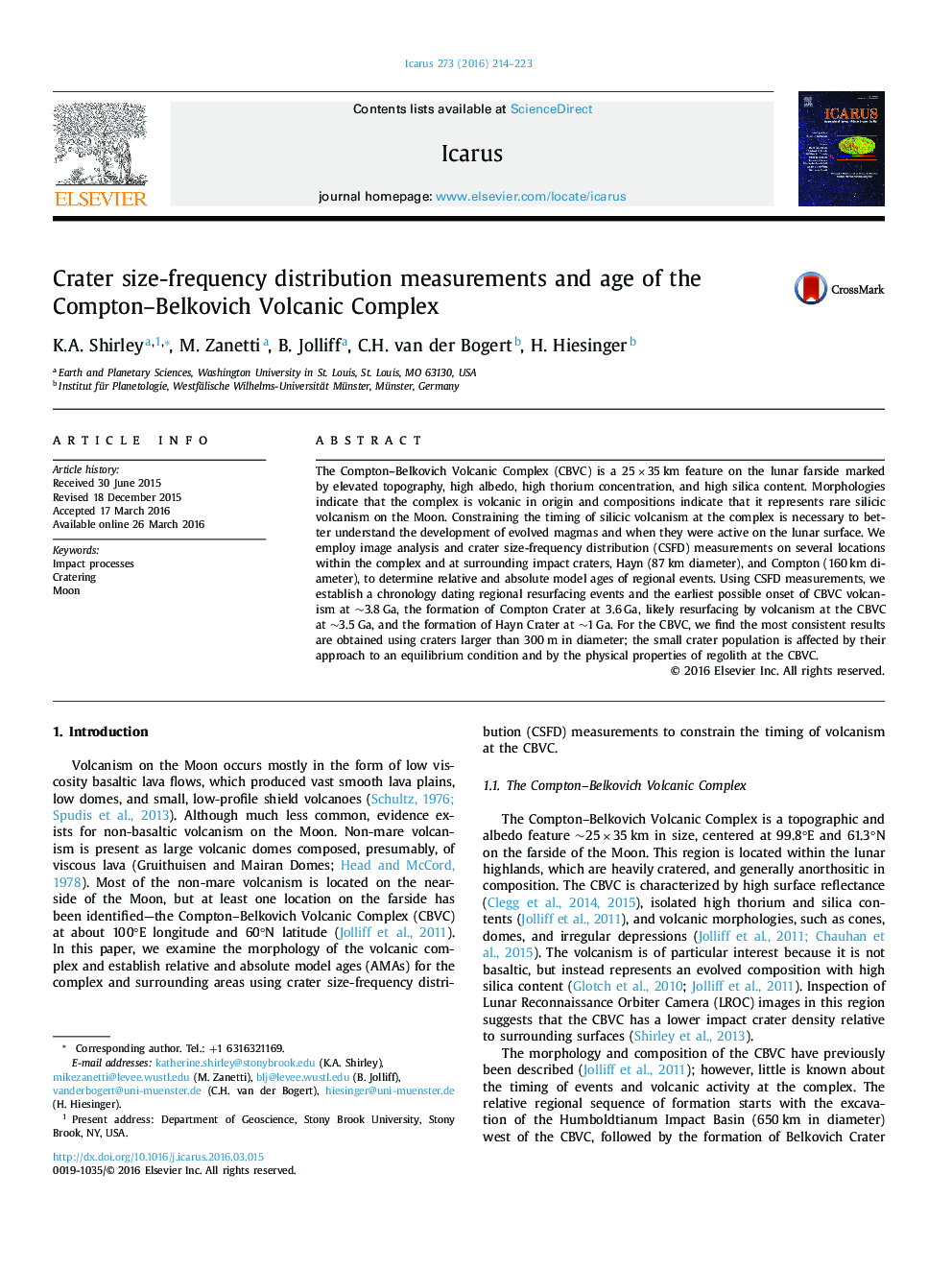| Article ID | Journal | Published Year | Pages | File Type |
|---|---|---|---|---|
| 8135147 | Icarus | 2016 | 10 Pages |
Abstract
The Compton-Belkovich Volcanic Complex (CBVC) is a 25Â ÃÂ 35Â km feature on the lunar farside marked by elevated topography, high albedo, high thorium concentration, and high silica content. Morphologies indicate that the complex is volcanic in origin and compositions indicate that it represents rare silicic volcanism on the Moon. Constraining the timing of silicic volcanism at the complex is necessary to better understand the development of evolved magmas and when they were active on the lunar surface. We employ image analysis and crater size-frequency distribution (CSFD) measurements on several locations within the complex and at surrounding impact craters, Hayn (87Â km diameter), and Compton (160Â km diameter), to determine relative and absolute model ages of regional events. Using CSFD measurements, we establish a chronology dating regional resurfacing events and the earliest possible onset of CBVC volcanism at â¼3.8Â Ga, the formation of Compton Crater at 3.6Â Ga, likely resurfacing by volcanism at the CBVC at â¼3.5Â Ga, and the formation of Hayn Crater at â¼1Â Ga. For the CBVC, we find the most consistent results are obtained using craters larger than 300Â m in diameter; the small crater population is affected by their approach to an equilibrium condition and by the physical properties of regolith at the CBVC.
Keywords
Related Topics
Physical Sciences and Engineering
Earth and Planetary Sciences
Space and Planetary Science
Authors
K.A. Shirley, M. Zanetti, B. Jolliff, C.H. van der Bogert, H. Hiesinger,
